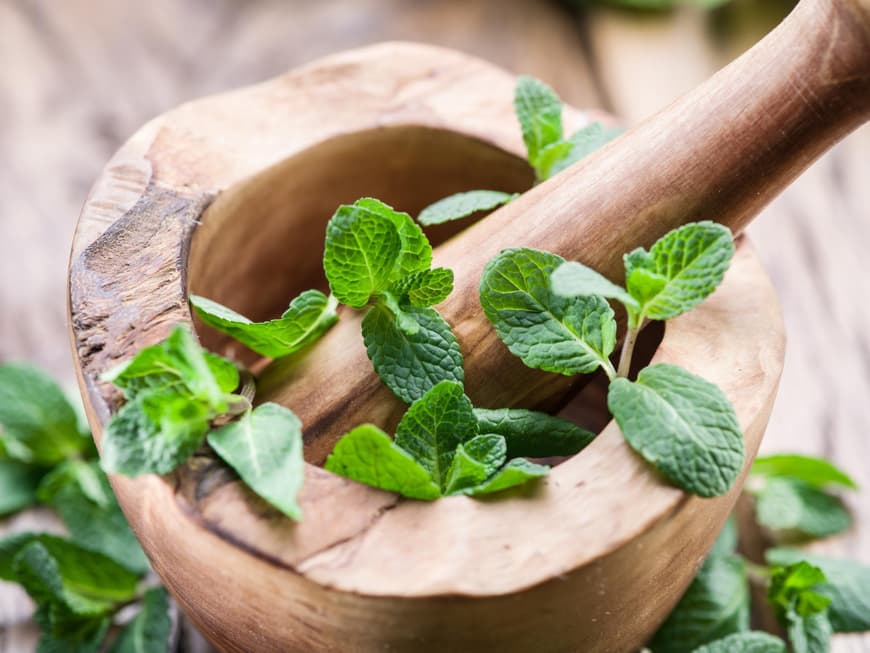
It helps with headaches like ASA or paracetamol
Peppermint contains a lot of menthol. The green herb was named medicinal plant of the year back in 2004. Menthol can alleviate many ailments: It helps with intestinal problems, colds and tension headaches. The peppermint oil solution Euminz (pharmacy) has now even been included in the "Practice Guideline for Primary Headaches" of the German Society for Pain Medicine. This is because in clinical studies, the solution was just as effective and fast-acting as ASA or paracetamol - and the gastrointestinal tract, liver and kidneys are not affected.
It also relieves intestinal complaints well
Peppermint is used internally and externally. As a tea, it has a refreshing, analgesic and antispasmodic effect. The menthol stimulates digestion and bile secretion. Inhaling peppermint helps with coughs and colds as it has an antibacterial effect. Because of its fresh taste, it is often an ingredient in toothpaste, mouthwash or chewing gum. And in lozenges it quickly provides fresh breath.
The dried leaves are used
Peppermint is easy to grow, either in a pot or in the garden. The leaves are used and are best harvested before the flowering period in July and August. The leaves should not be dried in the sun and should be kept airtight and protected from light.
